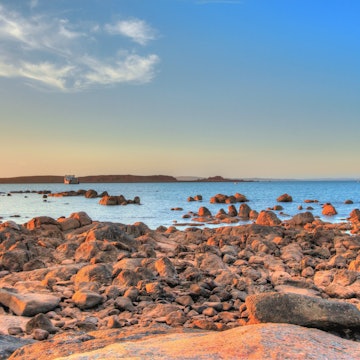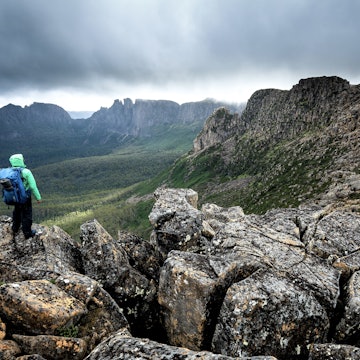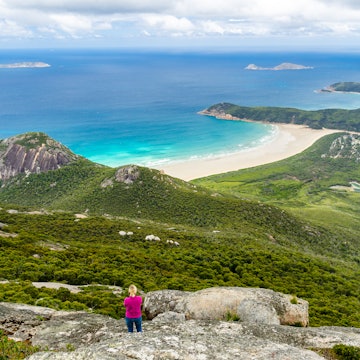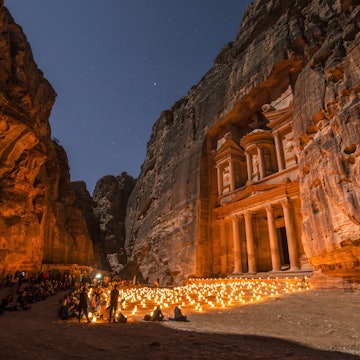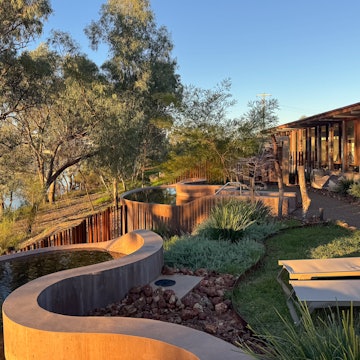
Queensland by Land: Lush forests, open beaches and fascinating culture
Sponsored by

Mar 31, 2021 • 5 min read

There's no lack of ways to explore the Queensland landscape, including a yurt stay on the Gold Coast © Courtesy of Tourism & Events Queensland
The flourishing tropics of Queensland are a reflection of what happens when nature is left as it was intended.
Take the time to listen – to the calls of the rainforest, the flow of fresh water, and the wisdom of the traditional owners – and you’ll start to understand why Sir David Attenborough called this ‘the most extraordinary place on earth.’
Millions of years older than the Amazon, the Daintree is the world’s oldest surviving rainforest, and there is no lack of ways to explore it. Take the elevated boardwalks and get in amongst the lush vegetation. Taste the bounty of the tropics on fruit orchard tours in Cape Tribulation. Spot crocodiles on a boat trip along the winding Daintree River, and even explore by horseback on your way to Myall Beach, where the rainforest meets the sea.
In fact, here in Kuku Yalanji Country, is the only place on the planet where two World Heritage sites, namely the Wet Tropics of Queensland and the Great Barrier Reef, meet. The beautiful beaches that bridge them being the ultimate place to relax after adventure-filled days.
Here are some glorious ways to experience this incredible part of Australia.

Daintree Discovery Centre
In a rainforest as old and thriving as the Daintree, there’s so much more to see than just from ground level. The Daintree Discovery Centre, located about six miles north of the Daintree River, gives the opportunity to experience the rainforest from every vantage point.
Explore the quarter-mile of interconnected boardwalks and lookouts that allow you to get in the thick of the lower levels of the rainforest without impacting the forest floor. A self-guided audio tour will help you interpret what you’re seeing around you and learn how the Indigenous people of the area used the forest’s natural supermarket for food and medicine on the Bush Tucker Trail.
The Aerial Walkway gives access to the mid-level of the rainforest and an opportunity to spot a cassowary by the creek below, the area around the Discovery Centre being one of the best places to view them in their natural habitat. From the 75-foot-high Canopy Tower, visitors can take in the forest canopy from among the spectacular orchids and giant basket ferns, a favorite place to curl up for the resident pythons.
When it’s time for a break, visit the on-site theater for films and interactive displays on conservation and local wildlife, or have a coffee at the café overlooking McLean’s Creek.

Mossman Gorge
Mossman Gorge, reachable by road in 1hr 15min from Cairns or just 20 minutes from Port Douglas, is a tranquil valley where crystal-clear water washes over large ancient boulders in the Mossman River.
Begin your exploration at Mossman Gorge Centre, an indigenous ecotourism center with a café and indigenous art on display. Here you can pay homage to the heritage of the area by joining a guided Ngadiku Dreamtime Walk led by the traditional custodians of the land, the Kuku Yalanji people.
Ngadiku is a Kuku Yalanji word meaning ‘stories and legends from a long time ago’ and learning about them directly from the community is both an honor and privilege. The tour starts with a traditional smoking ceremony and the proceeding walk will take you along private tracks to culturally significant places not accessible to general visitors to the gorge. With an experienced Indigenous guide at hand interpreting the narrative of the people and land, you’ll come away with a special appreciation for this unique environment. The tour ends with bush tea and damper (bread made from crushed seeds).

Fraser Island
Nine miles off the coast of Hervey Bay is the World Heritage-listed Fraser Island. At 76 miles long and 13 miles wide, it’s the largest sand island in the world.
With its plentiful beaches, picturesque lakes and tropical rainforest miraculously growing out of the sand, it’s not difficult to understand why the Indigenous Butchulla people call it ‘K’gari,’ meaning ‘paradise.’ Fraser Island is also home to a sizeable population of dingoes, who – due to their protected status and isolation on the island – are believed to be the purest strain of this Australian native animal.
A fun and adventurous way for the whole family to explore the island’s sand dunes is sandboarding. Slide down toboggan-style or get your feet strapped in and surf the dunes like waves. The best places for sandboarding on Fraser Island include Waddy Point and Orchid Beach on the eastern side of the island, and Sandy Cape in the north.

Glow Worms – Gold Coast Hinterland
In the Gold Coast Hinterland, visitors can observe a most interesting natural phenomenon thanks to ideal conditions for an unlikely attraction: glow worms.
Interestingly, glow worms are not worms at all, but the larvae stage of the fungus gnat, a small type of fly. Using a process called bioluminescence, they emit a chemical glow from their rears to attract small flying insects as prey, which then get caught up in the sticky threads they string up like gorgeous, beaded chandeliers. The result is a spectacular blue-green light display, akin to a twinkling night sky.
One of the most popular places to view glow worms is at Springbrook National Park. Take a night walk to see them along the one-mile circuit that descends into ancient Gondwana rainforest to the Natural Bridge rock arch in Numinbah Valley.
For guaranteed sightings all-year-round, head to the Glow Worm Caves at Mount Tamborine, where the purpose-built cave is the perfect environment for this colony of native glow worms, and an important conservation initiative. It’s the only place in Queensland to see glow worms during the day and is a great option for those traveling with small children or anyone for whom a night walk may be challenging.
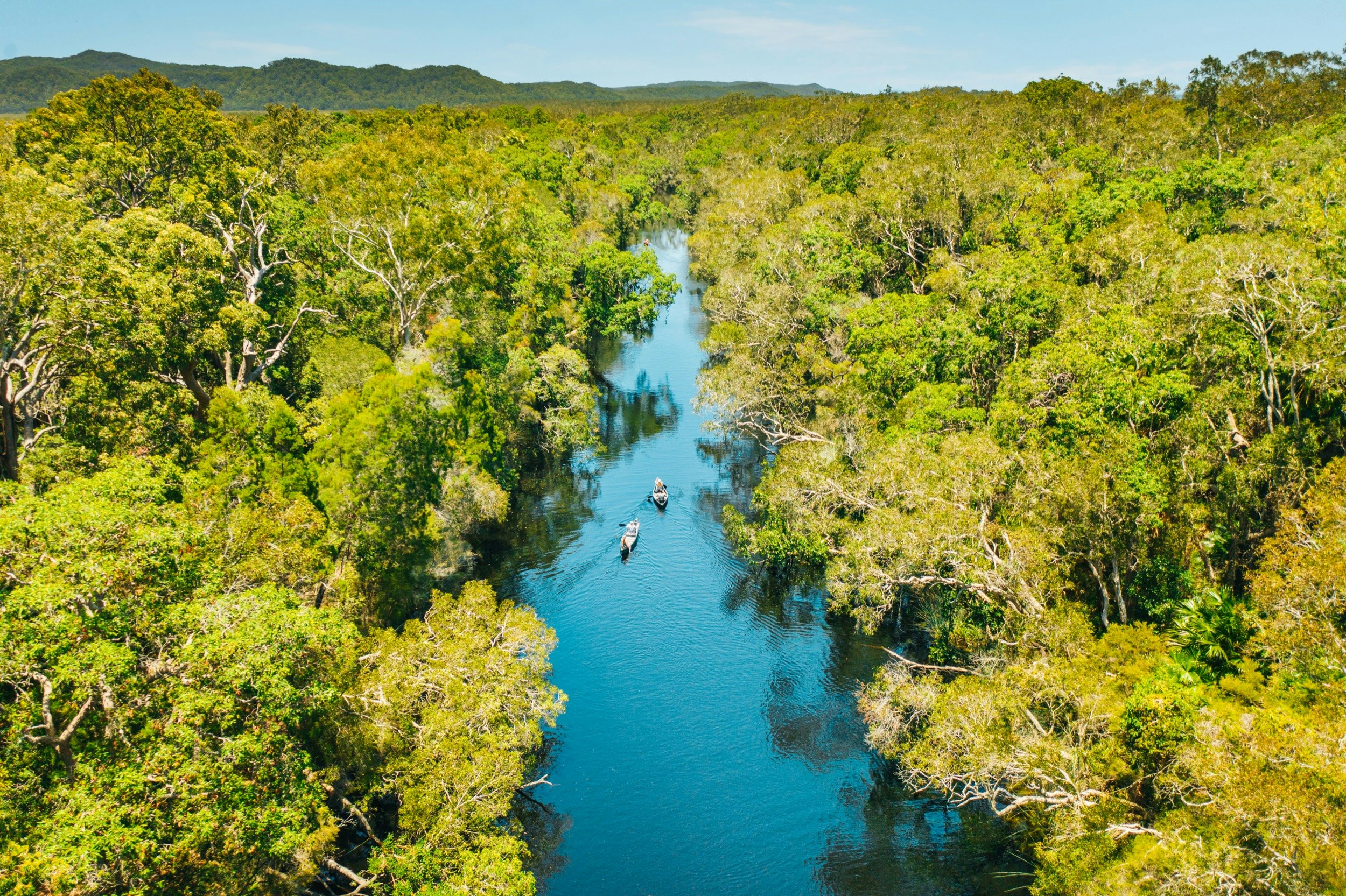
Noosa Everglades
The term ‘Everglades’ refers to an ecosystem of wet grassland with branching waterways, and here in Queensland’s Cooloola region lies one of only two everglades systems on earth.
The Noosa Everglades was Queensland’s first UNESCO Biosphere and is a significant habitat for many migratory bird species. Nicknamed ‘river of mirrors’ for its pristine and calm waters, the Noosa Everglades is best explored by eco-cruise or kayak.
Glide by tea tree forests, giant banksias and waterlilies, and spot the abundant wildlife, including if you’re lucky, a rare jabiru, Australia’s only stork.
Getting here is an easy day trip from Brisbane or just 12 miles from Noosa Main Beach, with many excursions departing daily from the Noosa River.
You might also like
Queensland by Sea: Vivid experiences on and under the water
Queensland by Air: Get a bird’s eye view of the riches below
Sponsored by Queensland
As a travel entertainment and inspirational media outlet, we sometimes incorporate brand sponsors into our efforts. This activity is clearly labeled across our platforms.
This story was crafted collaboratively between Queensland and Lonely Planet. Both parties provided research and curated content to produce this story. We disclose when information isn’t ours.
With sponsored content, both Lonely Planet and our brand partners have specific responsibilities:
-
Brand partner
Determines the concept, provides briefing, research material, and may provide feedback.
-
Lonely Planet
We provide expertise, firsthand insights, and verify with third-party sources when needed.






